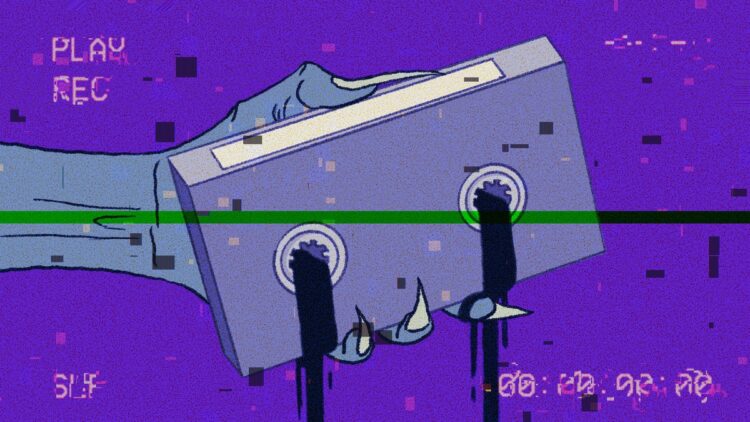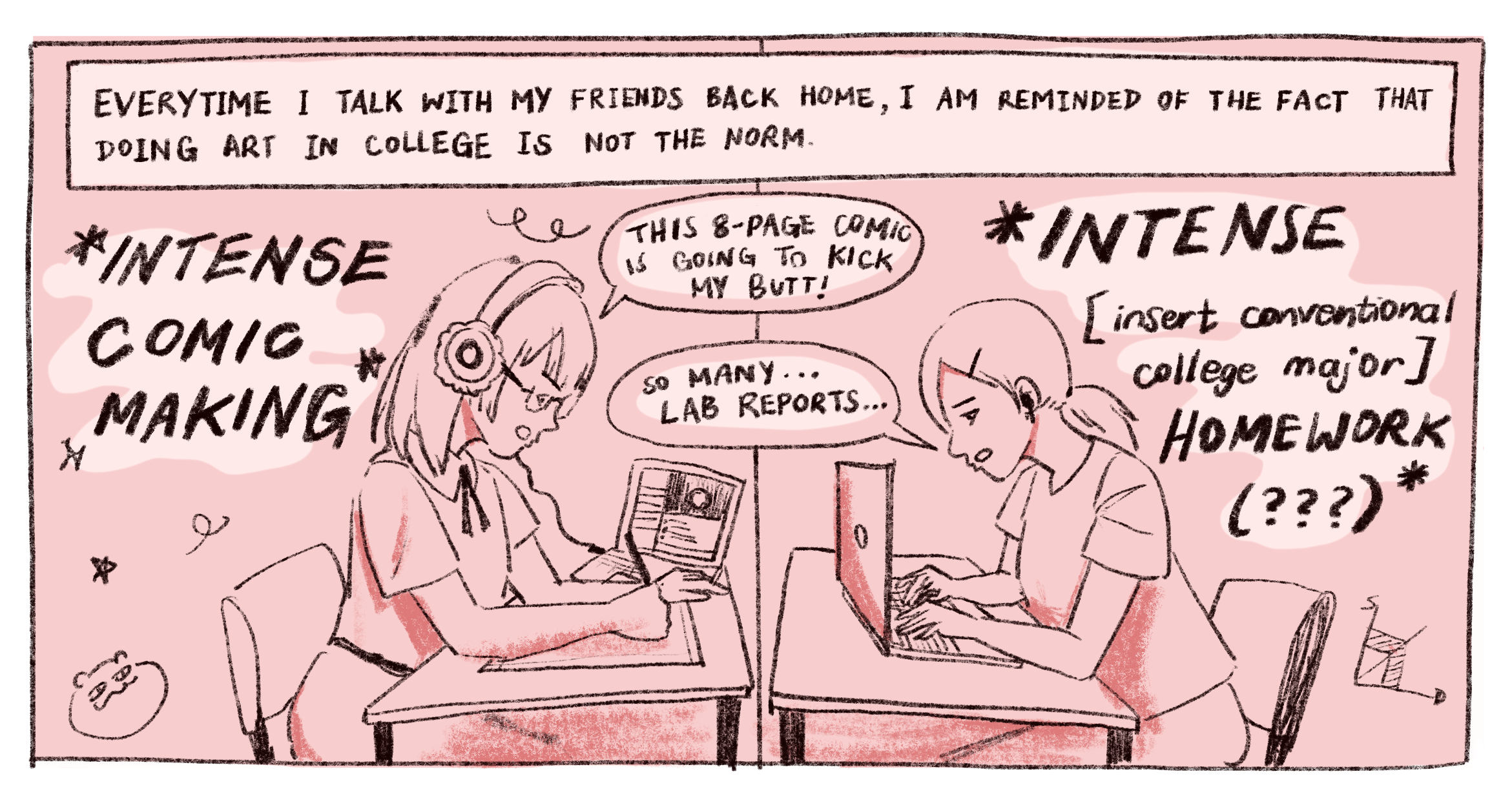“Ghosts in the Machine” is a column by F Newsmagazine’s Entertainment Editor, Nestor Kok. Here we will take a deep dive into the past, present, and future of analog horror, spotlighting the creators who bring our worst nightmares to life, and unraveling just what makes analog horror’s unique brand of storytelling tick.
It’s impossible to do any kind of comprehensive analysis of the analog horror genre without mentioning found footage horror. There’s no shame or surprise in admitting that the latter spawned the former; a more controversial take might even be that analog horror is the TikTok generation’s low-budget answer to Hollywood found footage outings like “REC” and “Cloverfield.” The primary difference between what we think of when we think of analog horror and found footage are their methods of distribution.
Most of the analog horror series that have any level of success today were often disseminated almost exclusively through viral YouTube algorithm recommendations, developing cult followings as the YouTube crowd’s curiosity draws more and more clicks on mysteriously-titled videos with grainy thumbnails. This is not often what we think of as “found footage,” which is mainly used to describe films with some kind of production budget and a widescreen release that runs the cinema-to-DVD-to-streaming course.
As a fairly unadaptable and semi-text-based medium, analog horror couldn’t have successfully existed online before the late 2010s. YouTube, in its nascent days, was oversaturated with inane memes and fairly-underdeveloped postmodern humor. What this meant, then, was that YouTube in the late noughties served as fertile ground for uploads of a more experimental nature, lovingly crafted by a rising generation of filmmakers who would go on to inspire today’s analog horror creators.
One of the definitive works from this early Internet age is the short film “No Through Road,” which began making the rounds on YouTube in 2009, uploaded by indrancole3, a channel whose previous content consisted entirely of comedy videos starring borderline-hysterical British teenagers. The overpowering air of mystery surrounding the film’s near-indecipherable thumbnail, combined with an introduction declaring that it was found footage released to the public by the British secret service, combined with the total 180 the channel’s content had taken, slowly but surely drew the attention of the general YouTube populace. What they found — a grisly tale of four teenage joyriders gone horribly and bloodily wrong — rippled through the underground corners of the Internet for years to come.
Fast-forward to the present day, almost thirteen years later. “No Through Road” has amassed over two million views, spawned three sequels, and is considered a foundational work for both analog horror enthusiasts and indie found footage buffs. The mysterious indrancole3 has been unmasked as Steven Chamberlain, a personable young filmmaker who went on to major in film at university and land a job as Senior Editor at an award-winning trailer production company. F Newsmagazine spoke to Chamberlain over Zoom about the distinctions between analog horror and found footage, careers in film, and the age-old question of, “What would you do if a masked guy with a knife was walking towards your car?”
The following interview has been edited for clarity and content.
So, the column that I’m interviewing you for is about analog horror. Are you familiar with the conventions of the genre right now?
What was the term you used? Analog horror?
It’s a subgenre of horror content on YouTube. A lot of it is denoted by found footage content or a grainy VHS or old camera aesthetic. Analog horror is often used as a vehicle for different reasons — there are independent filmmakers who want to try making no-budget films, there’s some who just see it as a hobby, and there are people who are like, “I have a story to tell and I thought would be good time to learn how to use editing programs.” Are you at all familiar with anything in the genre nowadays?
This is the funny thing about turning older. I’m not for a second trying to say I’m an “old man” — I’m 30 — but the more technology speeds up the older I feel. I thought I was aware of this stuff, but I haven’t actually heard the term “analog horror” as an overall term for a genre or sub-genre. My understanding of horror comes from more of a classical [horror] movie place, and my inspiration for “No Through Road” was very much from the stuff that I grew up watching like “The Blair Witch Project.” So to know that I’m being lumped in with a genre that I never knew existed is just one of many things you have to just take on the chin when you’re getting into your 30s and just realizing things move on a lot quicker than you anticipate.
I get that. The term “analog horror” probably didn’t exist back in 2009 when you made “No Through Road” either. What would you classify “No Through Road” as?
“Found footage” would be the term, because my inspiration for it was probably, above all else, films like “The Blair Witch Project” — which is, to this day, one of my favorite horror films. It’s funny — I work with people that are much younger than me now who say, “That film is so boring, how do you think it’s scary?” To me, it’s amazing how quickly tastes change and the pace of what people expect from a horror film has completely turned on its head.
I wasn’t old enough to go see [“The Blair Witch Project”] in the cinema, unfortunately, but I was able to rent it from Blockbuster because I had, luckily or unluckily, parents that were pretty laissez-faire about that stuff. So from a young age, I was watching that stuff, and it was just harrowing and completely caught me off-guard, and like, destroyed my dreams and gave me nightmares for weeks. And I developed a very positive passionate love affair with horror and the found footage sub-genre around the time that I made “No Through Road.”
Besides “The Blair Witch Project,” what were some other works that inspired you when making “No Through Road?” Was it mostly just horror movies in the cinema, or were there other people doing the same thing on YouTube at the time?
The original “No Through Road” developed from the fact that we literally just went out on the road because my friend Oliver had bought a new car when he turned 17. We would go on joyrides around town in the surrounding area of the countryside late at night, just because, you know, we were young, we were 17, we were dumb, and we thought it was fun. I’d recently bought a new camera and brought it along because I wanted to test it out. It was just a MiniDV, or maybe it had some early internal hard drive capabilities, but it was just a crappy old handheld camera from circa 2008-9.
All the stuff you see at the beginning of the film is literally not acting. It’s just us in the car being silly. But when we got to that area where that bridge-slash-tunnel thing is — that’s something we’d all known about and driven past a few times — the cogs started turning. Then it was very much a case of us being on a couple of beers — the passengers, not the driver — and thinking, “Imagine if we couldn’t escape this place? What would we do? Wouldn’t it be creepy?” And then I said, “Well, why don’t we just film it?” And then we did. So it wasn’t really acting; a lot of it was reacting to what I was suggesting. Nothing went into the planning of it that was a key inspiration for me, but my favorite horror films like “The Blair Witch Project,” “The Exorcist,” “The Shining” — you know, the classic, highly expected answers you would ask of a horror buff — probably did inspire it slightly.
You actually pre-empted one of my questions. You’re probably familiar with this, but a lot of people are Googling whether “No Through Road” is real, which is the exact same thing that happened when “The Blair Witch Project” came out. I always found that notable, because there’s something so genuine about the way you and your friends are in the film. Knowing it was improvised is part of the answer, but now I’m curious about the point at which you decided you were going to make it into something concrete — a short film about a time loop and a masked killer. At what point did the planning actually kick in?
With “No Through Road 1,” I was just having fun learning how to edit on my laptop with a cruddy non-professional version of Final Cut, and was just trying stuff out. Once I had two-thirds or four-fifths of it in the can, I realized that we needed a cooler, scarier ending, so we went out and shot the ending, which hadn’t originally existed. So, disappointingly, it’s just a mishmash of stuff that we made up on the fly.
“No Through Road 2” was its own thing, and then we filmed 3 and 4 around the same time. “No Through Road 2” was our attempt to do something a little bit more restrained. Looking back, it’s my least favorite of all four of them because it errs on the side of being boring; I was trying too hard to be cool and restrained and grown-up about the whole thing. But at the end of the day, we realized that we should just be trying to entertain people, and that’s when we had that awesome idea — well, sorry, self-proclaimed awesome idea of the time loop. I remember us all being very excited; sat around my house having a couple of drinks one night and talking about “Doctor Who” and time loops. One of us was like, “What if we witnessed the events of the first film from the other side of the tunnel?” And it was just immediately like, “Yes, that is the perfect way to end it.”
On the note of it being like “The Blair Witch Project,” I probably get a comment more than a few times a week asking if it’s real or not, and my assumption from that is that it’s very much younger people that haven’t quite got to grips with being able to see the finer details of why something is clearly not going to be real world, or how YouTube legalities work. But if “No Through Road” does convince people it’s real on an emotional level, then I’m very happy that that’s the case. I think if there is anything you can attribute to the lasting impact of “No Through Road,” it’s probably that we accidentally managed to capture the inherent tragedy of people that you like disappearing into a horrible scenario. It speaks to that fear that we all have.
Another thing I wanted to ask was about you being based in England. Today, in 2022, analog horror is now a thriving genre mostly dominated by American content creators and narratives. “No Through Road” is one of the only major works in the current analog horror canon that is not American in its origin or setting. However, its content arguably transplants classically American strains of horror — like the “Blair Witch” influences and the masked predator-killer a la “The Texas Chainsaw Massacre” — into a British setting. At the time you were creating “No Through Road,” did these distinctions matter to you?
Any filmmaker should respect that they stand on the shoulders of giants. As much as there is some great British horror out there, I was mostly inspired by American media but that all of my childhood. Alongside a huge amount of world cinema and British cinema, I do love American films, and I think they cornered the market on horror especially during the 70s and the 80s.
It’s interesting to know that “No Through Road” feels like that from an international perspective. Tons of people have said that in comments — “Oh, this feels like when I drive home from this place in Minnesota,” or other places I’ve never been. To me it felt very personal because this is just what country roads are like, just outside of my hometown in Stevenage. Everyone that’s from any area like that in England will watch this video and say, “This gives me the creeps,” because this is exactly how horrible it feels driving down those country roads with steep banks and high hedges. I guess you never know how things are going to be interpreted, but as an English person it feels very English. If it does strike a universal chord, it’s that chord of, “What would you do if there was a guy with a giant knife walking towards your car?”
What would you do if there was a guy with a giant knife walking towards your car?
What always makes me laugh is that in “No Through Road 3” I often get comments that ask, “Why don’t they just run him over?” And then a minute later, it’s like, “Never mind. They tried.”
I remember thinking about this because I was the guy playing the masked killer — a little bit of trick editing there, because I couldn’t get any of the other guys to agree to it. It was a bit sketchy because it involved me dressing up as a murderer, wearing a mask and a trench coat and holding a giant kitchen knife while standing in the middle of a country road and letting the guys in the car drive off for over a mile until they could turn around and then drive back towards me to film that shot. So there were quite a few hairy moments where I had to leap and hide in the hedgerows so that I wasn’t arrested by the police for scaring the crap out of people who were just trying to drive home.
As a professional editor, could you share any insights into the craft of editing, or how to get into the industry, whether it’s film in general or editing specifically?
If there was any advice I’d give anyone, it’s not to worry about being too much of a perfectionist if you’re young. Being a perfectionist will come naturally to you, the more you edit. [For example,] the one thing I am most proud of with “No Through Road” is that we created a feeling that takes hold and actually lasts. I’ve heard people say that it feels like a mini feature film because of how emotional its story is, like what I love about “The Blair Witch Project” — it starts off with this equilibrium and everyone’s fine, and then very carefully escalates to a point of complete hysteria. And if that feels grand or emotionally intense, then I think a lot of the small mistakes an editor might make when they’re starting out; those will fall away and won’t matter too much.
I mean, take this guy, the 16-year-old kid that’s made the “Backrooms” videos with, like, 18 million views — Kane Pixels. I think the kid’s a genius and he’s going to do amazing things. When I watch that video I can tell that it’s CGI, but I don’t care, because his sound design is phenomenal. That’s something we really keep an eye on when we’re making in the world of trailer editing — how important sound design is. His sound design does more than half of the job. Yes, I can still tell it’s made in Blender even if he’s put a VHS filter on it, but it doesn’t matter because he creates a tone that completely works.
[Otherwise,] the only way to get better at editing or filmmaking in general is to just keep trying. I would just tell kids who are aspiring to work in film — just take a big swing of the baseball bat and try something fun and crazy. Best advice I could ever give anyone.
You’ve gone through such a huge evolution as a creative, from comedy videos to “No Through Road” to becoming a professional editor and making a few short films too. How do you feel looking back on that, and what are your plans for the future?
My time and attention is currently taken up with a job that I really enjoy, but at some point I would like to try and get my creative juices flowing for personal projects again. The other thing about being young is that most people that can help you have free time. When you get older, everyone, myself included, has very little free time, so it’s about trying to find ways to make schedules work for other people as well — things like that have dampened potential start-ups of projects previously.
Looking back, I don’t think I could say anything I haven’t already said. I’ve done lots of comedy stuff on my YouTube channel, and I’m glad that people like that stuff, and that “No Through Road” made a big impact. Those are the two things that are closest to my heart — I love being made to laugh, and I also love horror. Which is why I’m glad that “No Through Road” is continuing to scare the crap out of people years later.
You can watch all four installments of “No Through Road” on the indrancole3 YouTube channel here.
Looking for more analog horror? Be sure to read our previous interviews with the creators of “The Mandela Catalogue,” “The Monument Mythos,” “Gemini Home Entertainment,” and “CH/SS.”






















